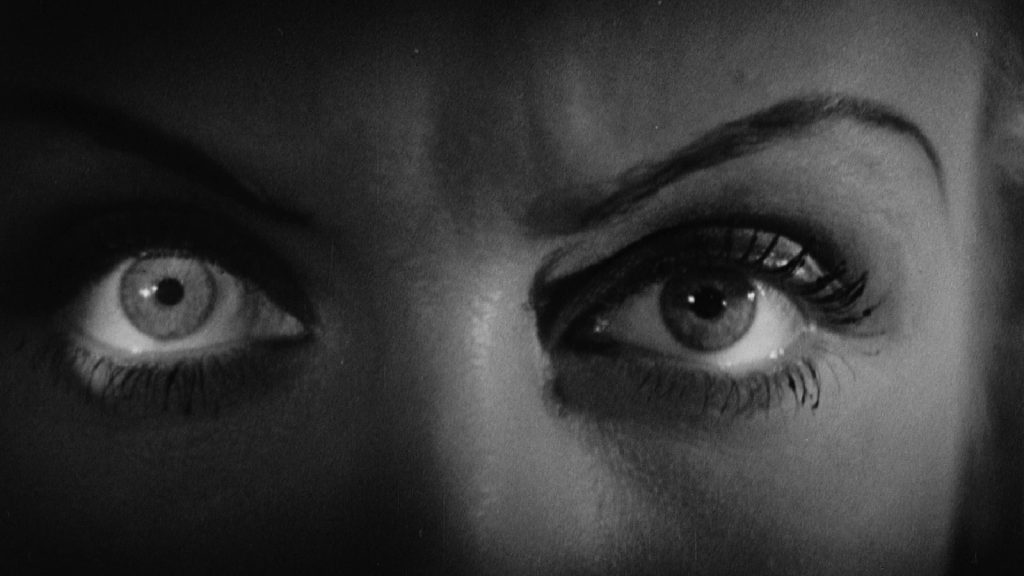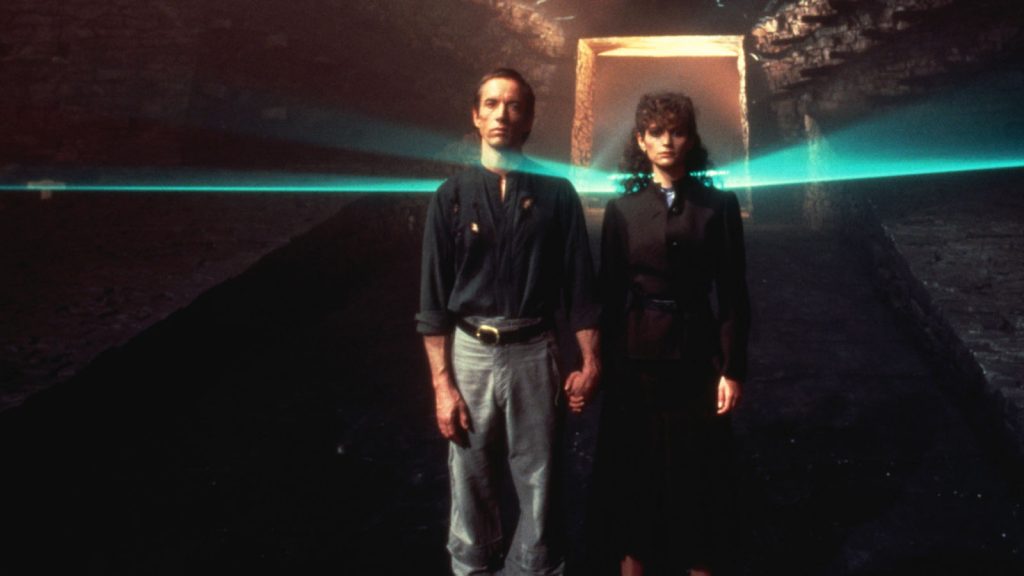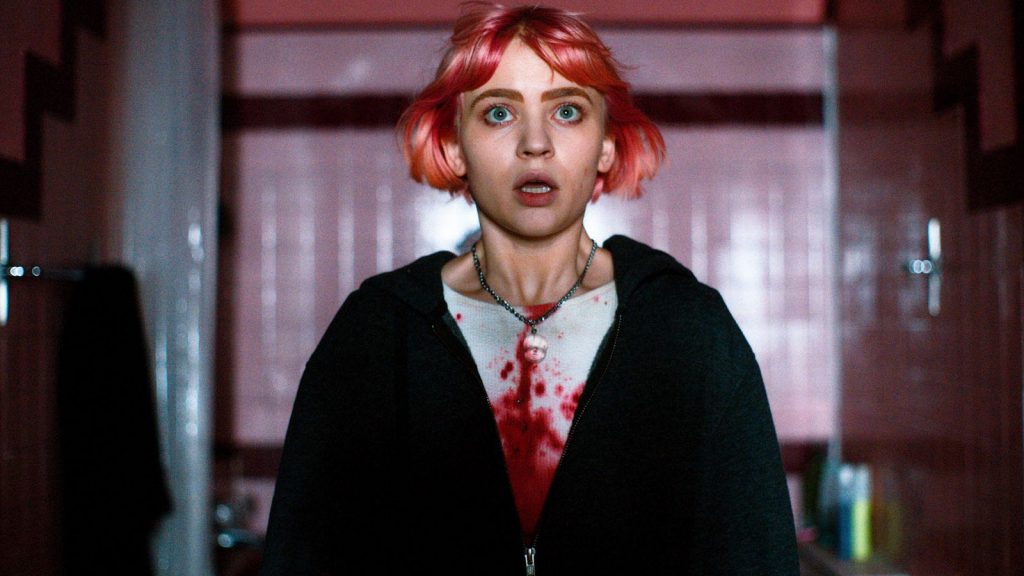
“How am I going to make it right?
How am I going to make it right?
How am I going to make it right?
(And you hear: how am I going to make it right?)
How am I going to make it right?
How am I going to make it right?
(How am I going to make it right?)”
–Björk, “Desired Constellation”
“But… there is no such constellation…”
–Willem Dafoe, Antichrist
Lars von Trier has always been quietly obsessed with genre trash that his audience would find distasteful. Antichrist is more in the tradition of The Evil Dead than The Mirror. It is structured like a horror movie, down to a late revelation that Charlotte Gainsbourg’s character has been out of her mind for much, much longer than we or her husband (Willem Dafoe) have realized. Von Trier would (wryly?) dedicate Antichrist to Andrei Tarkovsky; he’d visually allude to Cy Twombly and Carl Theodor Dreyer. But his castration-obsessed beating heart belongs to Sam Raimi and Meir Zarchi. Dogville (2003) is a rape-revenge film. Me Me Lai appears in The Element of Crime (1984). Antichrist is the rare movie to feature both male and female genital mutilation, and revels in its prosthetic gore effects as much as its ultra-slow-motion natural tableaux.
An unnamed couple (credited as “He” and “She”) lose their infant son to an accident while they are having sex, which destroys the woman mentally and physically with grief. The husband (a therapist) asks her to stop taking her medication and engage in ill-advised exposure therapy. They travel to an isolated cabin in the woods (“Eden”), the place where the wife attempted and failed to write her thesis—on “Gynocide,” a litany of tortures and manners of death in which women were condemned throughout history—and she has since designated as the source of her greatest fears. During their sessions, she only becomes more erratic and dangerous, veering wildly from sobbing to violent sexual outbursts. Gainsbourg is characteristically reticent in her performance. In all three of her films with von Trier, she is stuck with a man who does not understand her or what she’s experienced. A man who uses his intellect to shape her emotions into something he can distantly control. Dafoe’s character is dealing with the death of his son by intellectualizing his wife’s treatment. He doesn’t have to feel anything if he can manage her more extreme feelings.
Antichrist arrived in 2009 after von Trier’s two biggest creative failures (2005’s Manderlay and 2006’s The Boss of It All). After he grappled with crippling depression, antidepressants left him overweight and with a tremor. He was unable to operate a camera—something he felt was deeply important to his process. Yet he came back at his highest strength. The three films he made, each featuring Charlotte Gainsbourg (Antichrist, 2011’s Melancholia, and 2013’s Nymphomaniac), were dubbed his “Depression Trilogy.” They are all unequivocal masterworks. Antichrist has been ascribed many meanings. One is an indictment of the exposure therapy von Trier went through with his therapist.

Von Trier’s Cannes enfant terrible status in some way limits the discussion around Antichrist—“Is it misogynist or not?” is an idiotic and simplistic approach to art. Like with many great filmmakers, his care in depicting women characters does not stop him from behaving like a piece of shit in real life. Björk retired from acting after Dancer in the Dark (2000), later citing that her boundaries were constantly crossed by the director. Antichrist was originally set to star Eva Green, but von Trier pushed her to act in scenes she didn’t feel comfortable with. Earlier, she had accused him of outright misconduct and implied her career had been destroyed by leaving the production.
Von Trier is obsessed with women, just as his idols were (Bergman, Dreyer, Fassbinder); he’s obsessed with sexual violence in all its myriad forms. The women von Trier writes are astounding, complex portrayals of their most extreme emotional states. No one has ever examined female depression in such a beautiful way. That he may equally be getting off on destroying these women as he is showing their pain is not an either/or question.
Antichrist is full of portentous images that imply that motherhood is an aberration—a stillborn deer lying limp in its birth caul from its mother’s womb, ants swarming a baby hawk that’s fallen from its nest, a fox devouring its young, a crow buried in the earth. The inexplicable baby voice wailing in the wilderness, seducing Gainsbourg’s character away from her child is something out of folk tales and the Brothers Grimm. Her motion toward the sky following this scene, blurring seamlessly with an impossible overhead shot of a vast deep-growth forest. She intones “Nature is Satan’s church” to her husband’s dubious shock. Nature means both instinct and a gnostic demiurge. She never mentions God. Only Satan. “Eden” is a space of inexplicable, Lovecraftian horror here. Unspoken in Antichrist is the idea that an idea can poison someone, drive them mad. She is contaminated by her research.
Antichrist is a profound depiction of female rage, of being reduced to your body, its products and nothing else. She has been told over and over again, in contradictory ways, that she is not in control of herself. In turns, she is sexually greedy, an abusive mother, and violently possessive (screaming, “You’re leaving me, YOU SAID YOU WOULDN’T LEAVE ME,” as she pummels her husband). She brutalizes him by battering him unconscious with a log, then bashing his cock and jerking him off to bloody completion. Finally, she takes a millstone and drills it through his ankle, ensuring he can’t abandon her. She externalizes her worst image of herself. When she harms herself, she has her husband masturbate her, and when she experiences pleasure, she self-castrates. The world will not give her the pain and humiliation she feels she deserves, so she must do it herself. The film’s final images, in which (digitally) faceless women swarm Dafoe’s character as he limps up the mountainside, are inexplicable. One could read it as the experience of how this suffering broke and twisted someone he thought he knew into a monster.
To drown, endlessly, in the violence inflicted upon women is to be a woman in the world. 🩸

is a writer and filmmaker living in Brooklyn.
Beast is a lot of movies in one package—fractured fairy tale, belated-coming-of-age story, psychological drama, regional horror film—but above all it’s a calling card for its leading lady...
BY STEVEN MEARS | October 31, 2021
A philosophically infused coming-of-age tale and Victorian-era fantastical travelogue with overt nods to both Frankenstein and The Island of Dr. Moreau, Yorgos Lanthimos’s Poor Things is...
BY JOSÉ TEODORO | December 8, 2023
BY JOSÉ TEODORO | October 22, 2025

This pre-Code offering packs a lot of story into its typically brisk running time, with several plot threads weaving together a (not always successful) tapestry of spooky and criminal doings.
READ MORE >
BY ANN OLSSON | Month 00, 2021

In what could be the fastest-resulting rape revenge movie, a drunken lout brutally forces himself on Ida, the young woman who doesn't return his affections, during a party over Labor Day.
READ MORE >
BY LAURA KERN | Month 00, 2021

Beast is a lot of movies in one package - fractured fairy tale, belated-coming-of-age story, psychological drama, regional horror film - but above all it's a calling card for its leading lady, Jessie Buckley.
READ MORE >
BY LAURA KERN | Month 00, 2021